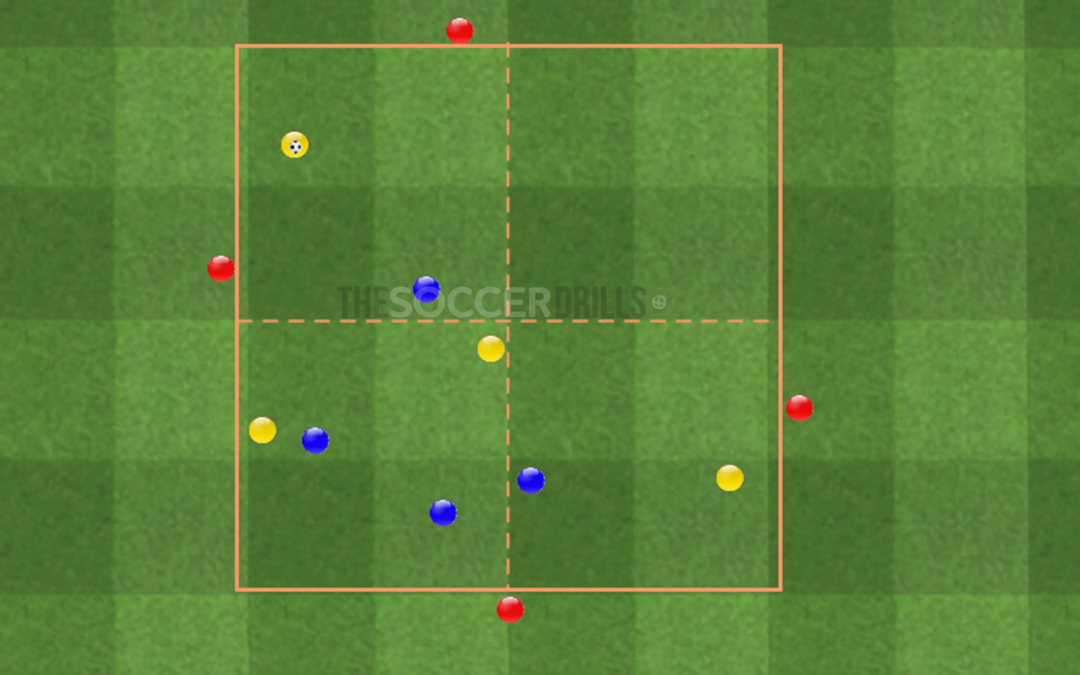
Offensive transition with the free man.
When we win the ball back when defending a team which presses us after losing the ball, we will need to connect with the free man playing behind the rivals’ back.

When we win the ball back when defending a team which presses us after losing the ball, we will need to connect with the free man playing behind the rivals’ back.

There are teams that, while they play they get out of shape constantly. With this drill you would be able to improve the offensive tactical balance.

Once the ball is won back, the first option that all the coaches like is to try to move up the field and to try to benefit from the possibility of a defensive imbalance. Let’s practice it.

To control the game pace we need the players to dominate the offensive tactical principals of delaying, change of pace etc.

We adapt a rondo in order to practice the use of the third man and the free man as a microstructure to advance in the game.

The fact of facing offensive freedom (continuous decision making) to two defensive lines will develop multiple defensive tactical concepts

The objective is to move from the creation zone to the finishing zone. To avoid that the rivals could send the ball to your defenders back.

It is a classical position drill which is used by different elite coaches like Klopp, Guardiola or Sarri. Quick decision making and little movements to create free passing lines at a higher speed than the real game. This will help your players to make the right decisions during the game.

Since regularly, all the rondos are played in a high pace, is it possible to practice a tactical rondo in which you work both the change of pace and the high and low pace? It is definitely possible if we include a small modification in the structure so our players can make decisions about the pace of the game.

The creation of triangles and diamonds to attack is an obsession for some coaches (Guardiola, Nagelsmann…), here you can find a partial structure that will help your players to encourage that positioning.